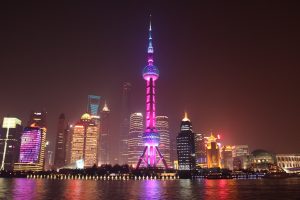Traffic, pedestrians and joggers reappeared on the streets of Shanghai on Wednesday as China’s largest city began returning to normalcy amid the easing of a strict two-month COVID-19 lockdown that has drawn unusual protests over its heavy-handed implementation.
Shanghai’s Communist Party committee, the city’s most powerful political body, issued a letter online proclaiming the lockdown’s success and thanking citizens for their “support and contributions.” The move came amid a steady rollback in compulsory measures that have upended daily life for millions while severely disrupting the economy and global supply chains.
While defending President and Communist Party chief Xi Jinping’s hardline “zero-COVID” policy, the country’s leadership appears to be acknowledging the public backlash against measures seen as trampling already severely limited rights to privacy and participation in the workings of government.
In one such step, the Cabinet’s Joint Prevention and Control Mechanism issued a letter Tuesday laying out rules banning “non-standard, simple and rude indoor disinfection” by mostly untrained teams in Shanghai and elsewhere that have left homes damaged and led to reports of property theft.
Full bus and subway service in Shanghai was being restored from Wednesday, with rail connections to the rest of China to follow. Still, more than half a million people in the city of 25 million remain under lockdown or in designated control zones because virus cases are still being detected.
The government says all restrictions will be gradually lifted, but local neighborhood committees still wield considerable power to implement sometimes conflicting and arbitrary policies. Negative PCR tests for COVID-19 taken within the previous 48 hours also remain standard in Shanghai, Beijing and elsewhere for permission to enter public venues.
That measure didn’t deter people in Shanghai from gathering outside to eat and drink under the watch of police deployed to discourage large crowds from forming.
“With the lockdown lifting, I feel very happy. I feel today how I feel during Chinese New Year — that kind of mood and joy,” said Wang Xiaowei, 34, who moved to Shanghai from the inland province of Guizhou just a week before the lockdown began.
Liu Ruilin, 18, said she wasn’t sure her building’s security guard would let her and others out on Tuesday night. The restriction ended exactly at midnight, she said.
“Then we said, ‘Let’s go to the Bund to have fun,'” she said in the city’s historic riverside district. “We thought there wouldn’t be too many people here, but we were surprised after coming over that a lot of people are here. I feel pretty good — quite excited.”
Schools will partially reopen on a voluntary basis, and shopping malls, supermarkets, convenience stores and drug stores will gradually reopen at no more than 75 percent of their total capacity. Cinemas and gyms will remain closed.
Health authorities on Wednesday reported just 15 new COVID-19 cases in Shanghai, down from a record high of around 20,000 daily cases in April.
A few malls and markets have reopened, and some residents have been given passes allowing them out for a few hours at a time.
The lockdown has prompted an exodus of Chinese and foreign residents, with crowds forming outside the city’s Hongqiao Railway Station, where only some train services have resumed.
Even while the rest of the world has opened up, China has stuck to a “zero-COVID” strategy that requires lockdowns, mass testing and isolation at centralized facilities for anyone who is infected or has been in contact with someone who has tested positive.
The country’s borders also remain largely closed and the government has upped requirements for the issuance of passports and permission to travel abroad.
At least half of foreign companies in Shanghai are waiting until next week to reopen while they put in place hygiene measures, said Bettina Schoen-Behanzin, a vice president of the European Union Chamber of Commerce in China. As a precaution, many companies plan to have only half their workforce on site at a time.
“There is still quite some uncertainty and a scare that if there is a positive case in the office building or in your compound, you might be locked down again,” said Schoen-Behanzin, who works in Shanghai.
The strict restrictions in Shanghai, the country’s commercial capital and home of the world’s busiest port, dragged down Chinese economic activity and disrupted global manufacturing and trade.
Retail sales fell by a worse-than-forecast 11 percent in April from a year earlier, government data show. Auto sales fell by almost half from a year earlier, according to the China Association of Automobile Manufacturers.
Private sector forecasters have cut their estimates for this year’s economic growth to as low as 2 percent, well below the ruling Communist Party’s target of 5.5 percent. Some expect output to shrink in the three months ending in June.
“The economy is really in a crisis,” said Schoen-Behanzin.
The Port of Shanghai, the world’s busiest, appears to be back to 80 percent to 85 percent of its normal operating capacity, according to Schoen-Behanzin. She cited data that said the port had a backlog of 260,000 cargo containers in April.
“The rest of the world will feel these delays probably (through) June or July,” she said.
The city will likely see a “mass exodus” of foreign residents this summer, “especially families with small kids,” Schoen-Behanzin said. She said about half of Shanghai’s foreign residents had already left over the past two years.
“People are really fed up with these lockdowns,” she said. “It’s not safe, especially if you have small children.”

































